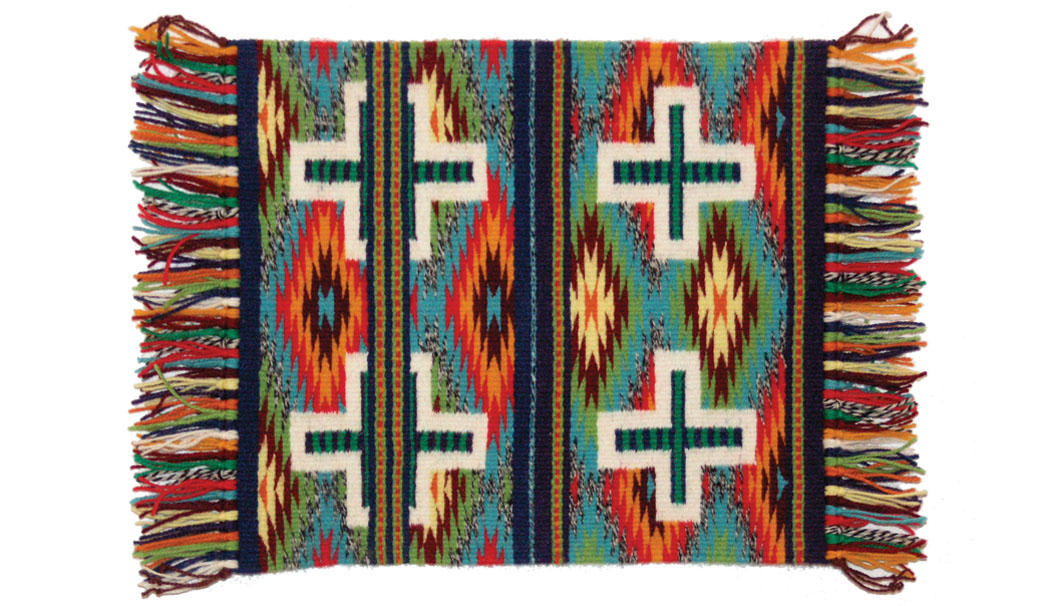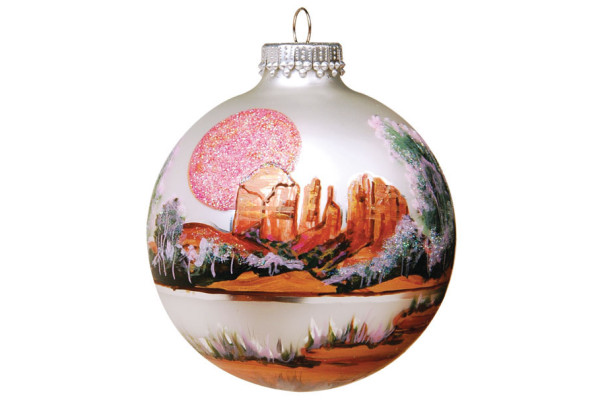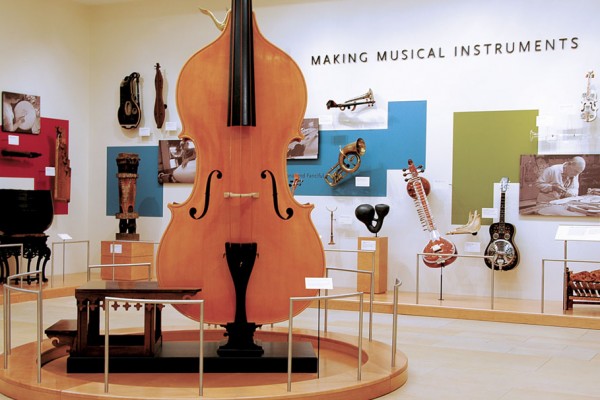In 2007, Sedona Monthly wrote about a Navajo family of silversmiths as the first installment of our annual cover story devoted to Native American art. Since that issue, we’ve written about Hopi katsina carvers and potters from New Mexico’s Acoma pueblo. This year, we met with members of a family of four generations of Navajo rug weavers. Lena Williams has been weaving since she could walk – she sold her first rug when she was 7. Her pieces can be found at Garland’s Navajo Rugs here in Sedona (though considering it can take her up to one year to complete a rug, don’t expect to find an enormous selection at any given time).
Lena’s niece, Melissa Cody, has also been weaving since she was a child, and while she was in high school, she began to favor more contemporary rug designs (one of her Germantown Sampler rugs is pictured above). Ever since, she has received a lot of attention from Southwest museums and art shows. Melissa admits she doesn’t know a lot of people her age weaving rugs, but she insists it’s not a lost art. Lena has her own theories. “It’s hard for small kids to get into it,” she says. “They are too influenced by TV, and this takes lots of patience.”
Finally, we met with Steve Mattoon, the manager of Garland’s Navajo Rugs, which has been buying weavings from Navajo artists since the store opened in 1976. Steve gives us an overview of the evolution of rug patterns and rug collecting. To see more work from Lena and her family, visit www.garlandsrugs.com or www.navajorugsart.com.
Navajo Rug Weavers: Lena Williams and Melissa Cody
In the Navajo creation story, Spider Man, one of the Navajo Holy People, showed the women of the Diné tribe how to build the first loom; his female counterpart, Spider Woman, in turn taught the Navajo how to weave on the loom. The textiles were originally used as blankets, cloaks, ceremonial dresses and saddle blankets. But toward the end of the 19th century, Navajo weavers began selling their work as rugs to tourists, and a highly collected commodity was created. Rug weaving has been a source of income for four generations in Lena Williams’ family going back as far as her grandmother. And now her niece, 27-year-old Melissa Cody, is generating her own buzz in the world of Native American art. Lena, Melissa and Lena’s 8-year-old granddaughter, Rebecca Williams, gathered in Lena’s home in Birdsprings, which is located east of Flagstaff and within sight of the San Francisco Peaks on the Navajo Reservation.
Looms of various sizes framing rugs in different stages of completion stand in Lena’s living room while Rebecca, on break from school, quietly works on her own small striped weaving. Patiently, Lena brings out the tools of her trade, pointing out spindles, raw sheep’s wool, carding brushes, clay collected locally that brightens white wool, warp, heddles and a flat board called a batten. Lena comes from a family of 10 girls and three boys, and she speaks fondly of the days when all of her siblings would gather in her mother’s house for carding, an early preparation process in weaving where the wool is combed until the fibers all lie in one direction.
“I grew up watching my mom and my grandma weave,” says Lena. “On summer breaks, one of our chores was spinning wool and gathering plants to dye the wool. Rabbit brush was a common one because it was within walking distance and it turned the wool a yellow-green color. We used commercial dyes as well, but my mom encouraged us that if we were going to start with plant dye, we stay with plant dye.”
Lena’s mom, Martha Schultz, supported her family with her rug weaving while her husband was working up north in Page, Ariz. (Martha, who is nearing 80, still weaves today and has her own flock of churro sheep.) Martha sold her rugs to the Museum of Northern Arizona and then Garland’s Navajo Rugs in Sedona. Lena was 7 or 8 when she sold her first rug. The buyer was an attorney in Winslow, and he bought her first piece for $30. “That’s what motivated me,” she says, laughing.
Nearby, Rebecca seems to make a silent note to herself as she continues working on her rug. Later, when asked what she’d like to do with the rug she’s working on, she says, “Sell it.” And what will she do with the money? “Spend it.”
Lena went on to work in the public school system after taking courses in child development at Northern Arizona University, all the while raising three boys and one girl. She would weave in her spare time, and she taught weaving to local middle school students. “I had them build their own looms,” she says. “Most families with weavers pass down their tools, but there were many students who didn’t come from those families so we had them make their own tools.”




